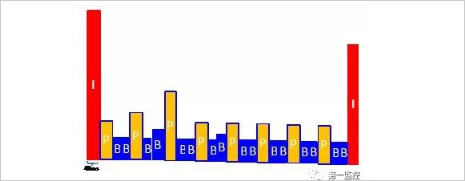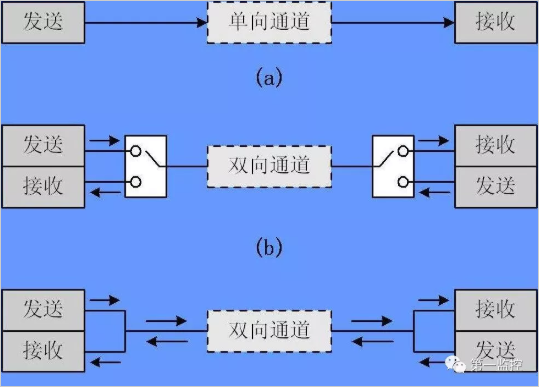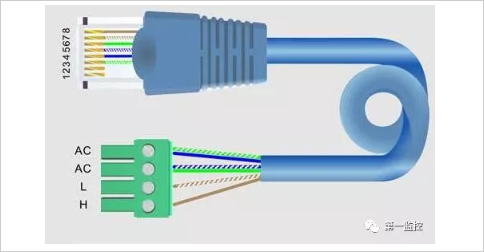A netizen asked for help, the image of the network surveillance camera will be stuck, but the bandwidth is calculated. One network camera occupies 8M bandwidth, the switch is 100 megabytes, and 11 stations are connected. In theory, 100 ÷ 8 = 12.5 units, a total of 11 Taiwan's network bandwidth is not enough, but it will also be networked, what is the reason?
The reason for Caton can usually be found externally, but what should you do if you exclude external factors? In response to these confusions, we must first understand the basic concepts of network monitoring and related equipment.
What is video stream and frame rate?
The video stream is the data traffic used in unit time after the video file is encoded. Also known as video bit rate. Is the most important part of the quality of video pictures (taken from baidu encyclopedia).
The unit time of the code stream in our surveillance video is 1 second. 1 second = 1000 milliseconds (this is used below).
Then will the video image flow like a stream of water? Certainly not. It is passed through the frame, the frame is the data transmission unit, and the more frames per second (in fps), the more smooth the displayed action will be. High frame rates for smoother, more realistic video animations.
If the video is 25 frames per second, there is a time interval between each frame. The time interval can be calculated as 40 milliseconds. Then we can know that the average bit rate of the transmission and transmission interval is smaller than the code rate when the video frame is transmitted.
Frames are also divided into I frames, P frames, and B frames. The I frame is usually the first frame of each video clip, and its occupancy is the largest, which can be understood as follows.

What is full duplex and half duplex?
Full-duplex transmission means that the switch can receive data while transmitting data, and the two are synchronized. This is like a wide road with an east-west direction, allowing two carriages to pass through, when the carriage A travels from east to west, carriage B When driving from west to east, the two cars can travel at the same time without affecting each other. In this example, the wide road represents the full-duplex link. Current switches support full duplex. The advantage of full duplex is that the delay is small and the speed is fast.
Half-duplex means that only one action takes place in a period of time. For a simple example, a single-wood bridge can only allow one person to pass at the same time. When two people, A and B, come across from the riverbank, this situation Only one person can stop at the bridgehead and wait for another person to come over and then continue to go. In this example, the single-wood bridge represents the half-duplex link. Early walkie-talkies, as well as early hubs, were half-duplex products. When the data traffic is large, the links working in the half-duplex mode will be in conflict and wrong packets, which will ultimately affect the performance. Therefore, half-duplex has gradually withdrawn from the historical arena.

The difference between full-duplex mode and half-duplex mode in the network card
1. In the full-duplex mode, the 8 network root lines must be respectively connected to the corresponding line position of the crystal head;
2. In the half-duplex mode, only 4 wires are connected, and the T568B standard is used. Generally, four wires in the position of 1, 2, 3, and 6 are used, namely: orange, white, green, white, and green. Four lines. Orange, white and orange are used to send data, and green and white are used to receive data.
3. In full-duplex mode, the network cable can reach a speed of more than 100 megabytes. In half-duplex mode, the speed that the network cable can reach is usually about 10 megabytes.

4. The full-duplex mode network cable can work in full-duplex mode or half-duplex mode; however, half-duplex mode network cable cannot work in full-duplex mode.
5, in the half-duplex mode, the extra two sets of lines can be used to connect the dian phone line, for example: the "white blue, blue" line is divided into the dian line. In the LAN network cabling, this way can save wiring costs, a twisted pair cable is used at the same time as the network cable and dian telephone line.
What is the network port rate?
The network interfaces we are using today are all Ethernet interfaces. The network port interface rate determines the bandwidth of the interface to transmit data. The commonly used interfaces have 10Mbps, 100 Mbps, and 1000 Mbps rate types.
Common Ethernet interface types include RJ-45 interface, RJ-11 interface, SC optical interface, FDDI interface, AUI interface, BNC interface, and console interface. But we usually say that the network port speed is RJ-45 interface, which is the network cable crystal head.
Interfaces of different rates are also likely to be successfully connected, and the working rate ultimately needs to be agreed upon. If the 100 Mbps auto-negotiation interface is connected to the 10 Mbps auto-negotiation interface, the negotiated working rate is 10 Mbps. Therefore, the interface rate is not necessarily its working rate, and the general working rate will be less than or equal to the interface rate.
The Multi Mill Granulator is a machine which have many functions such as crushing mass material, granulating for damp material, crushing thermal sensitive material, making dry and damp granule uniformly. When operation, it produce less heat and the powder dust is less, It can treat material that has adhesive property or is gum state, or heat and damp.
Multi Mill Granulator
Multi Mill Granulator,Multi Mill Granulating,Big Multi Mill Granulator
Changzhou Jiafa Granulating Drying Equipment Co.,Ltd , http://www.jf-drying.com